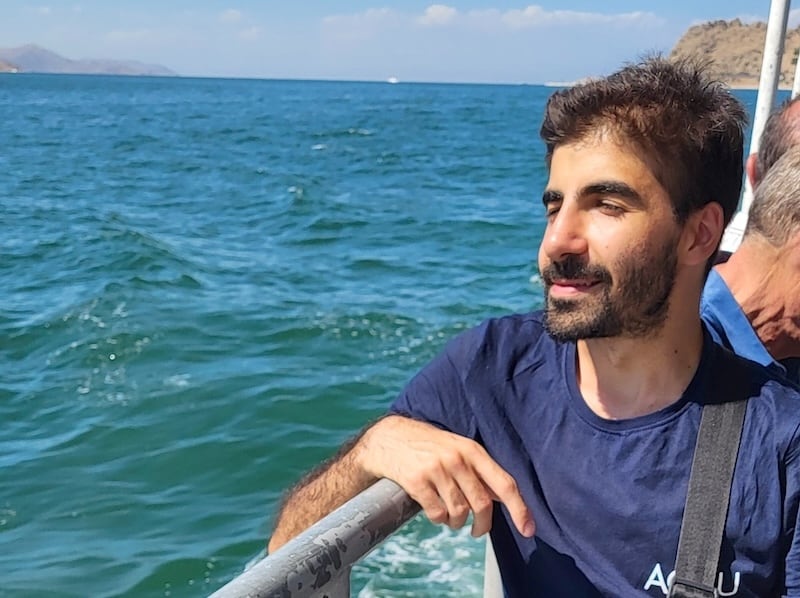Last Updated on November 2, 2025 by Aram Vardanyan
Stepping back to the pre-Roman world, while everyone knows of Stonehenge, the Celtic heartland (Great Britain, Ireland, Gaul, and Iberia) is rich with megaliths, cromlechs, dolmens, and menhirs.
Interestingly, ancient Armenians built a similar, and even older, structure at Zorats Qarer (Qarahunj).
Furthermore, the deep cultural parallel extends to smaller stones: the mysterious Armenian Dragon Stones or Armenian Vishapakar bear a striking resemblance to the better-known Celtic menhirs (often found in Ireland), demonstrating a similar societal purpose across these distant cultures for crafting huge, significant stones.
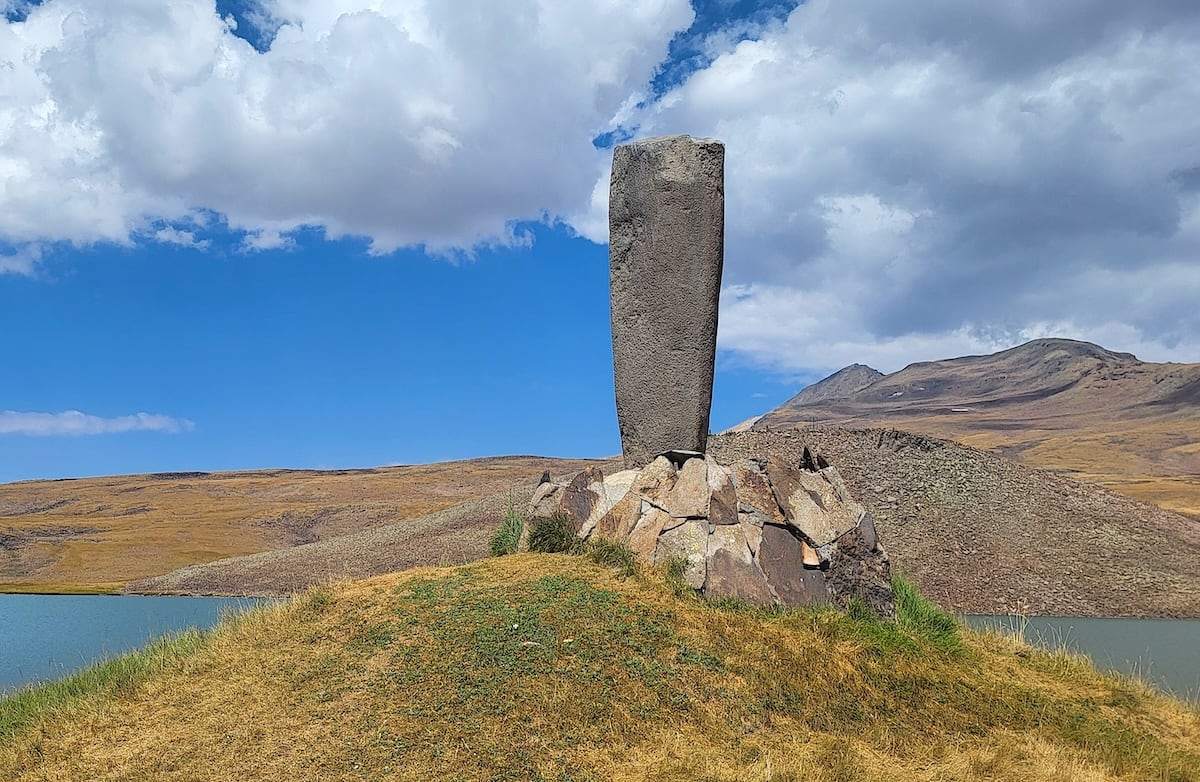
A lot of people know about Armenian stone craftsmanship because of the Khachkar or Armenian cross stone, an emblem of Armenian Christian heritage and identity. However, unfortunately, little is known about ancient or pre-Christian historical Armenia.
A rich civilization and mythology, as old as Greece and Persia, flying completely under the radar for mainstream audiences and history books.
Nonetheless, some remains can be found throughout the Armenian Highlands that can help gather more information about it and have a better idea of how life in the age of mythology and epic heroes must’ve been.
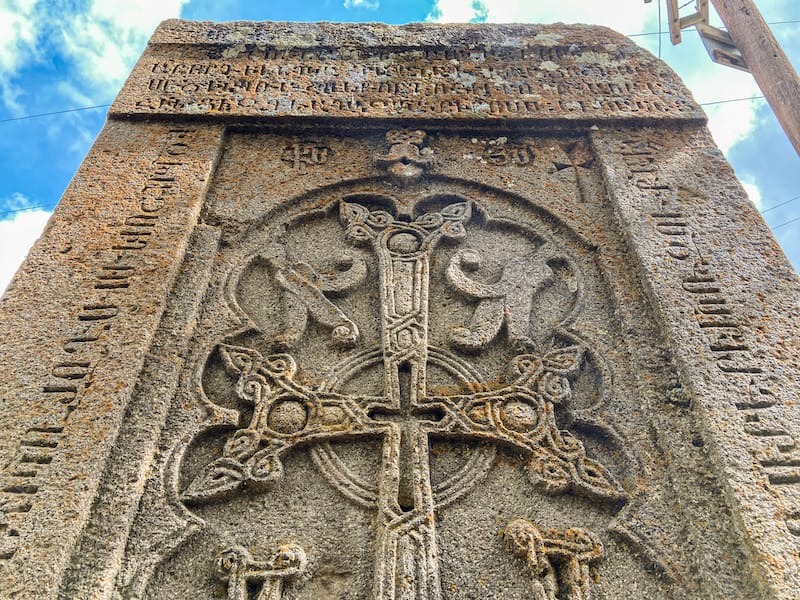
One of the best ways to reconstruct Armenian life 3000 years ago is the vishapakars, or Armenian “dragon-stones”, individual megaliths (essentially meaning “giant stones”) or monoliths, built around and even before the times of ancient Urartu (2900-2500 years ago) all over the Armenian Highlands.
Some studies even suggest that the first one may’ve been built up to 6000 years ago. Now that’s a lot of history right there, isn’t it?
The History of Armenian Dragon Stones (Vishapakar)
Vishapakar literally means “dragon-stone,” and some say they’re the predecessor to khachkars (Armenian cross-stones, see article).
The Armenian dragon stone is primarily composed of basalt, with a minority of andesite (a type of volcanic rock also found on Mars, in the crust of our neighboring planet).
The smallest ones are slightly over 1 meter tall, whereas the largest ones can reach up to an astonishing 5.5 meters.
They’re generally thought to be categorized into 3 types according to the way they’re shaped: fish, bull, or hybrid (between the two). It is still unclear whether or not that categorization does have some sort of meaning to it.
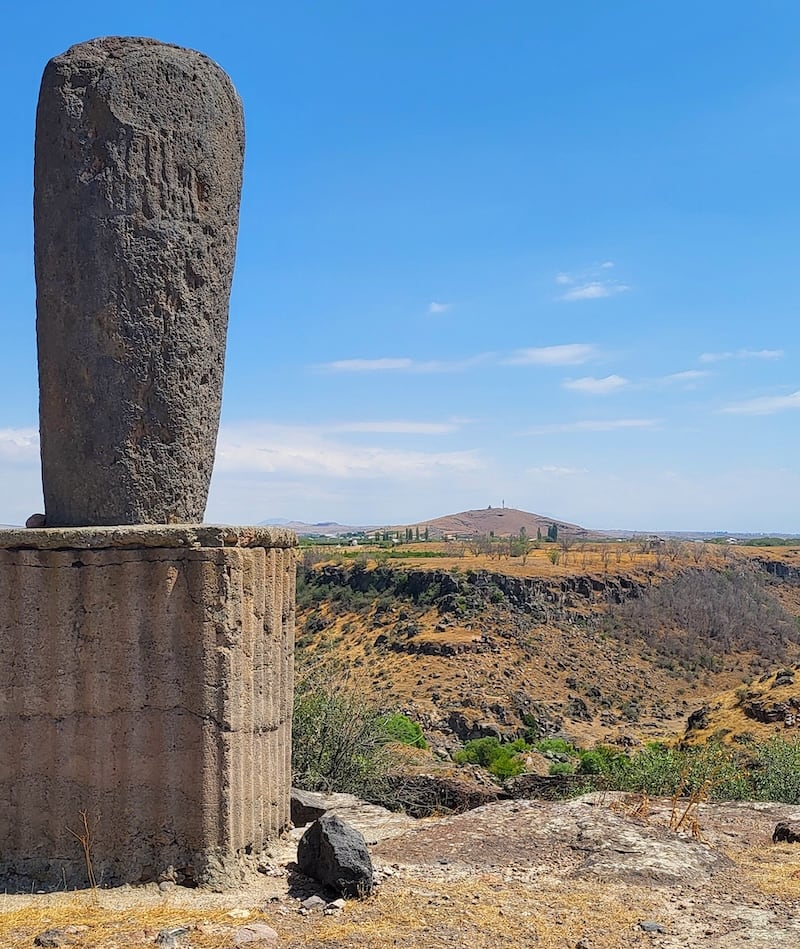
Today there’s an estimate of 150 “discovered” vishapakars, out of which 90 are in the Republic of Armenia, a few dozen in what’s known as Western Armenia (to the east of today’s Republic of Turkey), and a few others in Southern Georgia (in the ancient Armenian region of Javakhk).
The extent to which they can be found is Lake Sevan to the East, Lake Van to the south, Erzurum to the west, and Trialeti to the north, comprising roughly the whole area ruled by the kingdom of Urartu, the predecessor of today’s Armenian nation.
The Mythological Behind Vishapakar
Vishapakars are striking to the naked eye straight away, as they were intended to (more on their meaning, later on). One can really notice they stand out wherever they’re located. But what’s the meaning behind those giants?
What made ancient Armenians carve such sophisticated pieces of craftsmanship back then, and put them where they did?
Most, if not all, vishapakars spotted over the last century were placed near or next to a source of natural water or an irrigation system, hinting at some sort of connection to water and life.
It’s quite likely that they could’ve been some sort of marker to indicate locations or starting points for said irrigation systems or bodies of water.
That being said, not all depictions and conceptions of vishaps were positive.
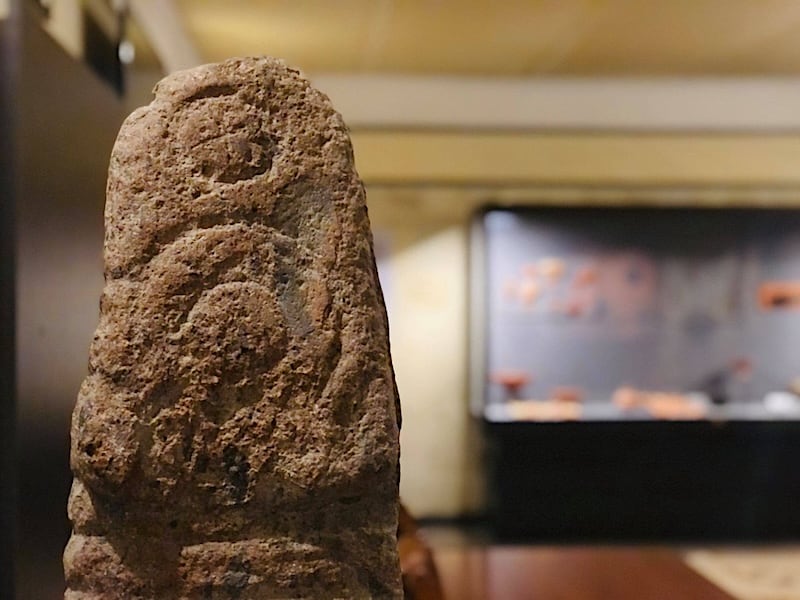
Another theory is that vishaps, those flying mythological creatures often thought to be a serpent or a fish with wings, were bad in nature, causing solar eclipses by ascending to the skies and poisoning the waters upon their descent back to earth with their toxic saliva, which is why the God Vahagn took it upon himself to fight them off, thus gaining the name “Vishapakagh” (“the Dragonslayer”).
Vishapakars are said to have been crafted and placed at older pagan shrines like Tirinkatar (in honor of the ancient God, Tir) near Mount Aragats between 4000 to 6000 years ago, but the shrines themselves are way older than that.
For instance, the Tirinkatar cult complex has been around for up to 8000 years nonstop, even having been adapted by Christians and Yezidis, and used by these current religions as places of worship for themselves too.
Sidenote, another case of a pagan shrine surviving today and repurposed for the Christian religion is Mount Maratuk or Mereto in the town of Sassoon (Western Armenia / East of the Republic of Turkey).
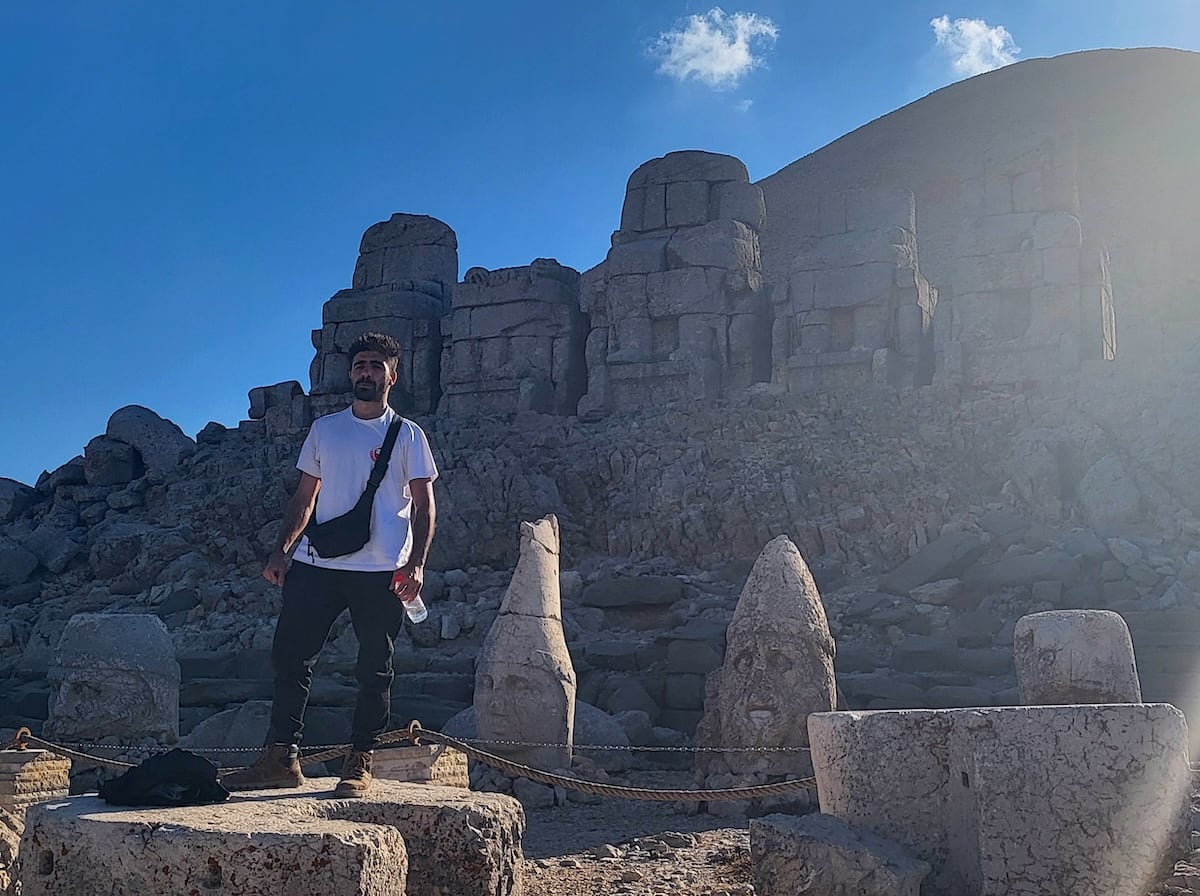
However, unfortunately, a lot of vishaps (much like most tangible expressions of paganism from ancient Armenia) have been destroyed after the conversion to Christianity and ever since, or repurposed as khachkars (Armenian cross stones), thus mostly losing their original features.
The ones left untouched have also been ignored and/or just fell into disuse for centuries (or over a millennium), and only since 1890 have we been seeing a spike in having them be “rediscovered”, usually by explorers, hikers, or archaeologists.
Where You Can Find Armenian Dragon Stone (Vishapakar)
You can find vishaps (dragon stones) in Armenia in several places, either in nature or on display in protected and urban spaces:
- In Yerevan (Urban/Museum):
- Matenadaran Museum-Institute: Located downtown (Coordinates: 40.1917491, 44.5209752).
- Nor Nork Suburban District: (Coordinates: 40.1956432, 44.5690900).
- Outside Yerevan (Nature/Ancient Sites): These were originally used for religious or hydration purposes in ancient times.
- Gegham Mountain Range: Near the Azat river and on the shores of Vishapalich (Dragon’s lake) (Coordinates: 40.1514353, 44.9045566).
- Mount Aragats: On the slopes near Qari lake (Coordinates: 40.4725021, 44.1820416).
- Voskevaz Town: Near the Qasagh river (Coordinates: 40.2566830, 44.2875014).
- Metsamor History Museum: A well-preserved Vishap is located right next to the museum (40.1255296, 44.1881808).
This ensures you can see one whether you prefer hiking/nature or urban settings.
What’s the future of This Wonder the Past?
As we mentioned in our article about the duduk (famous Armenian woodwind instrument), Armenia and Armenians are attributed only 8 elements of culture recognized as part of the world’s UNESCO Intangible Cultural Heritage (I know, that’s crazy considering how ancient and sophisticated the Armenian civilization was, but it is what it is).
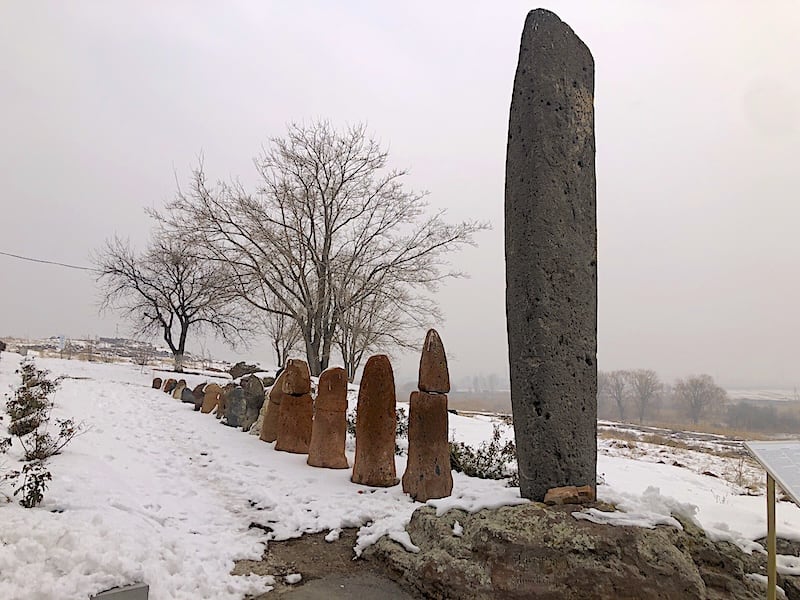
Now, the Armenian dragon stone is being proposed as the next one by the Permanent Delegation of Armenia to UNESCO, on grounds of being an “outstanding testament of one of the earliest monument art, places of cult and seasonal pastoralism in high mountains”.
One of the best things about vishapakars is how you can actually stand in front of them, look at them in full detail, and even touch the ones that aren’t in a protected area!
Imagine being in the shoes of an ancient warrior or king, and being able to touch craftsmanship made for rituals and production more than 3000 years ago.
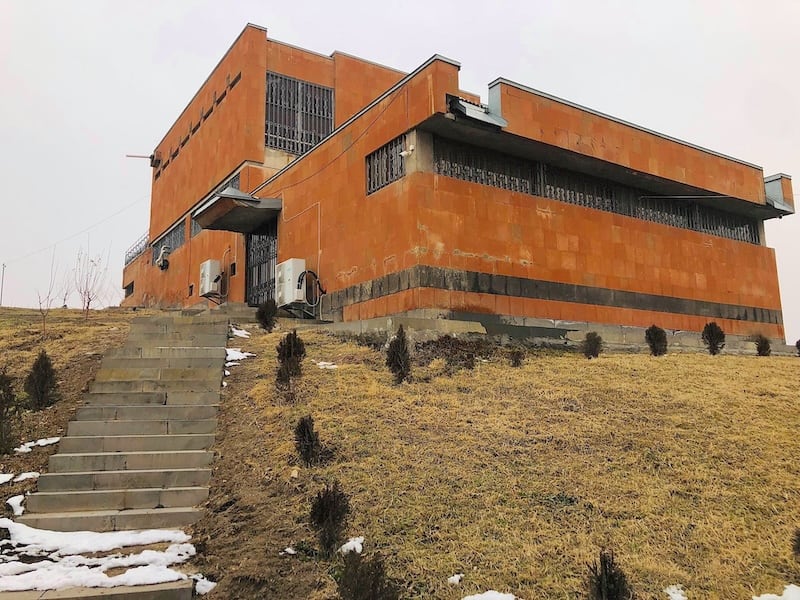
A portal to ancient times, a time of epic stories and legends. Well, you have to imagine no more; you can actually do it! So, get out there and start exploring! Maybe you’ll find a new Vishapakar that hasn’t been spotted for millennia!
Written By Germán Armen Haikazounian
